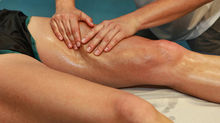Emily's Top 7 Tips for ACTIVE recovery this Winter
- The Studio Team
- Jul 11, 2018
- 4 min read
Hey there Studio bods!
Are you training for the City 2 Surf, or do you have burning desire to return to Soccer? Are you feeling a bit stiff following that run or workout? Are you 8 classes into The Studio Winter Warmer Challenge? Here are our top tips to recover and get the best out of your training and stay injury free!
To some “Active Recovery” may seem a paradox, how can you recovery while remaining active??
In the past the fitness industry has incorrectly promoted the idea that activity and recovery are mutually exclusive. For example, if you have had a long run on a Saturday you may have been advised to take 1-2 days off from high impact activity or perhaps take total rest from any physical activity. One could argue that this is not necessarily bad advice for the over zealous types who may need help to identify the importance of rest, recovery and load management. On the other hand, increasingly our working days are very sedentary and therefore light to moderate exercise can be very beneficial in preventing weight gain, posture related pain and promoting a smooth return to our chosen form of exercise.
What is Active Recovery?
Active recovery can be defined as a lighter or easier workout compared to your normal routine.
When looking at active recovery, context is very important. For an elite athlete jogging at a slow cadence on an ‘off day’ will likely have little negative impact on their system. However for an average person just getting back into exercise, or maybe coming back from an injury, a brisk 20 minute walk might be sufficient stimulus for recovery, pushing beyond this potentially risking overload, injury and hence pain. As a rule of thumb, active recovery exercises should make you feel better after completioncompared to before you started.
Here are our top 7 ideas for a great active recovery session!
1/ Myofascial release
You got it - foam rolling, spikey balls or whatever weapons/devices you can get a hold of to self-release those pesky tight or tender muscles. Consistent foam rolling maintains or increases range of motion and reduces over active muscle tension/tone. Myofascial release enables athletes to consistently train at higher levels and avoid the stiffness that often goes hand in hand with heavy training. On your recovery day try to foam roll most major muscle groups, take note of the troublesome areas and spend a little more time on these spots by using a spikey ball. Remember the goal is to loosen the muscle/fascia and feel better post soft tissue release – no need to bruise yourself balck and blue! Aim to designate a solid 10 mins rolling it out, distracting music/telly encouraged. Trust me, time well spent (and less time on the physio or massage table)!
2/ Swimming/ Aqua Aerobics
If you have been punishing the Bay concrete or tearing up the netball court, the joints can take quite a hit. Having a swim or doing an aqua class is the perfect answer to getting the cardio you crave with low stress on the joints. Mixing your cardio workout can also help to shake up your metabolic systems and avoid monotony in your exercise routine.
3/ Cycling
Similar to swimming, cycling requires less loading through your weight bearing joints. Cycling is a fabulous aerobic exercise and can be a great active recovery workout option, aim to match the intensity to your current fitness levels.
4/ Walking
A great thing to do for active recovery. Not only does walking burn calories, but studies have proven being in an outside environment can boost mood and overall wellbeing. Walk with a friend or download an interesting podcast (I have plenty to recommend) and get going!
5/ Hiking
Similar to walking; can help to burn some serious calories. Sydney boasts the best costal walks and the National Parks are stunning so plenty of incentive! If you haven’t done the Spit to Manly walk put it high on the to-do list.
6/ Light Weight Lifting/ Resistance Training
Exercise using heavy weights may be too intense on recovery days, but using lighter weights may be restorative. As a rule of thumb, use a weight at or below 30 percent of your usual weight, and perform one set shy of failure
7/ Pilates
Mobility work with a strong focus on stability is an ideal form of active recovery that can be done every single day - no word of a lie ;). A typical well rounded Pilates session should cover all the major joints in the body, taking them through a safe range of motion, whilst switching on the key core stabilisers and the all-important gluteals. Pilates also helps you to identify areas of weakness of stiffness that you can work on at home or during other parts of you training.
And my favourite post recovery tip… (if all else doesn’t go to plan) have a chocolate milkshake! Say what?! Recent research at Indiana University has proven that chocolate milkshakes have double the carbohydrate and protein content than plain milk and its water volume and sodium content replaces fluids and electrolytes after a big workout. You don’t have to tell me twice!

























